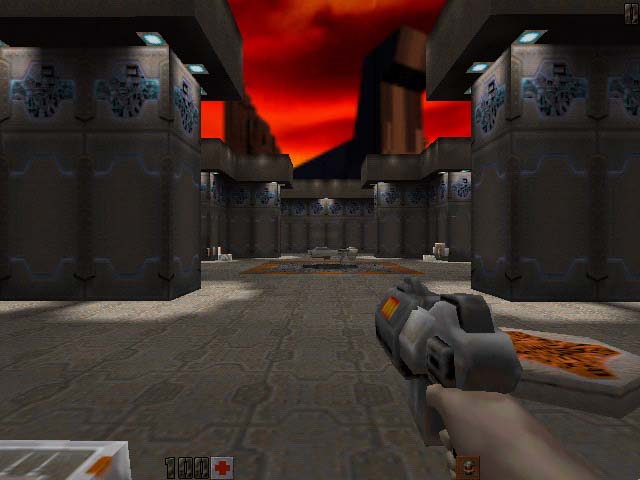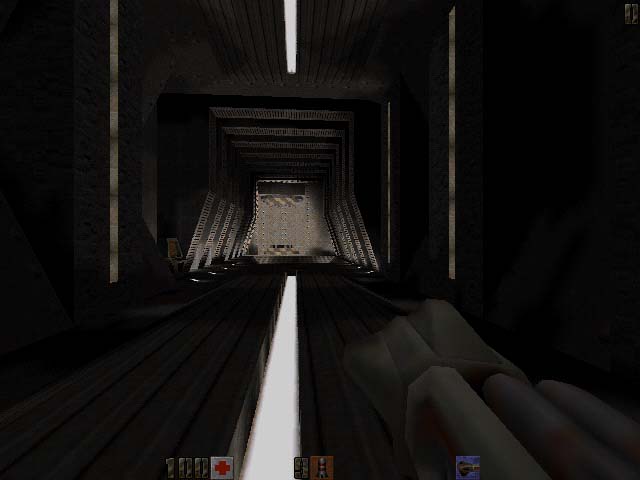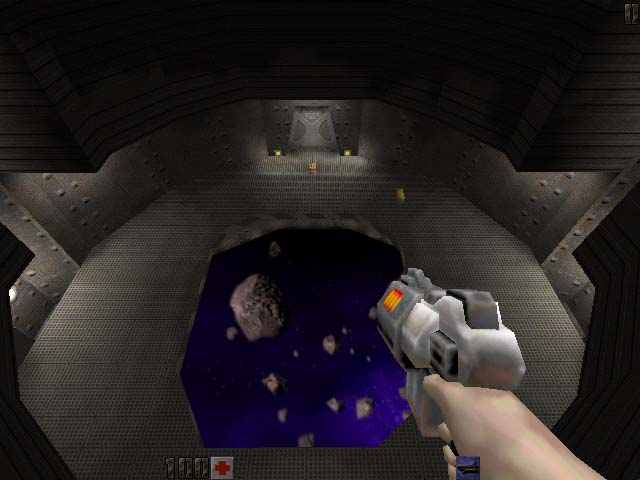Creative Labs Graphics Blaster EXXTREME
by Anand Lal Shimpi on December 22, 1997 8:29 AM EST- Posted in
- GPUs
| Interface: | PCI 2.1 |
| Chipset: | 3DLabs Permedia 2 |
| RAM: | 4MB 100MHz SGRAM (83MHz Clock) |
| Data Path: | 64-bit |
| TV Output: | No |
| Supported Applications: | OpenGL, DirectDraw/3D, 3D Studio MAX |
| Supported Resolutions: | 640 x 480 - 1600 x 1200 |
| Supported Refresh Rates: | 60 - 150 Hz |
How extreme is the Creative Labs Graphics Blaster EXXTREME? Very.
At the heart of the PCI based Graphics Blaster EXXTREME is 3DLabs' new Permedia 2 chipset. 3DLabs is a name known all to well in the high end workstation market, mainly because their first class chipsets are never very far from an engineer's desktop. Instead of concentrating solely on the high end market, 3DLabs manage to harness most of the power of their more expensive chipsets with the Permedia 2 while keeping the cost at a managable level. Satisfying the demanding needs of such a powerful chipset, Creative Labs outfitted the Graphics Blaster EXXTREME with 4MB of 100MHz dual ported SGRAM (see RAM Guide) found in the Graphics Blaster EXXTREME Value Edition. Unfortunately, that 4MB is not expandable past the set limit, therefore if you require more than 4MB of memory you will have to purchase the more expensive Graphics Blaster EXXTREME Professional Edition which is equipped with 8MB of SGRAM. In any case, the SGRAM is clocked at a whopping 83MHz, providing for ultra fast access times to and from the onboard memory subsystem for instant access to stored textures. Supporting resolutions up to 1600 x 1200 and 32 bit color depths it is quite obvious that the Graphics Blaster EXXTREME has its origins in the high end video industry, mostly derived from the manufacturer of the Permedia 2 chipset, 3DLabs.
The Permedia 2 chipset is obvously not designed for use with lower speed processors, and the acceleration it provides is highly scalable based on processor speed. Unfortunately the Graphics Blaster EXXTREME failed all Quake II timedemo tests on the Socket-7 processors it was tested with. The Graphics Blaster EXXTREME's strengths are its outstanding OpenGL performance as well as DirectDraw/3D acceleration, again these two aspects of the Graphics Blaster EXXTREME stem directly from the gifts given to it by its Permedia 2 chipset.
Don't consider the Graphics Blaster EXXTREME a 3D only solution, because it simply isn't. While most video card manufacturers, when designing a 2D/3D combo card, will skimp on either the 2D or 3D acceleration of the card, Creative Labs used their intense determination to create a video card that not only excels in 3D performance, but Windows/2D performance as well.
However if history has taught us nothing it is that performance is not the only deciding factor when making a purchase. The image quality of the Graphics Blaster EXXTREME is well beyond average, in all actuality it is arguably better than the image quality of Voodoo graphics accelerators.
The installation process of the Graphics Blaster EXXTREME is probably one of the easiest and trouble-free installations in the industry. When booting up the test system after installing the Graphics Blaster EXXTREME, even without the prior removal of other 3rd party video drivers, Windows 95 flawlessly detected the card as a Standard VGA adapter and when you use the supplied drivers CDROM the card is correctly identified as a Graphics Blaster EXXTREME. The hardware installation portion of the entire setup is accurately documented by Creative Labs' extremely thorough user manual which documents not only the installation but also the troubleshooting process you must undergo in case any problems arise. The software desktop configuration utility that is packaged with the Graphics Blaster EXXTREME is Creative's own Blaster Control addon. Using Blaster Control the user can change virtual and normal desktop settings, change refresh rates, color depths, resolutions, and much more. If, by accident, you manage to select a setting for your video card which is incompatible with your monitor or some other such device attached to your system the Blaster Control has a failsafe built in to it. A quick reboot into safe-mode allows the user to select a recovery setting from the Blaster Control's monitored actions you have performed...its the little things that make this card great...
Included with the Graphics Blaster EXXTREME, aside from its superb user manual, is the standard software bundle, however absent are the full versions of popular games/image editing software that we all know and love. Naturally the lack of such elements drives down the final retail price of the video card, but it also drives down the overall experience quality one has with the card itself...a tradeoff some are not prepared to make.
The Permedia 2 based Graphics Blaster EXXTREME does have its share of downsides too. Although the chipset provides massive performance in OpenGL and Direct3D applications as well as offering support for 3D Studio Max's Heide Application Standard, the Graphics Blaster EXXTREME is very CPU dependent. Unlike the Voodoo series of cards such as Diamond's Monster 3D based on 3Dfx's unstoppable chipset, the Creative Labs Graphics Blaster EXXTREME's performance scales in a direct variation to the speed of your processor. Don't expect your K6's and Pentium MMX to push the limits of 30fps in Quake 2, the test Pentium II system used only achieved a Timedemo frame rate of about 13.0fps, definitely not an impressive score for a 300MHz Pentium II.
In order to make the Graphics Blaster
EXXTREME's OpenGL drivers function properly in Quake 2, the following line had to be added
to the Quake 2 startup parameters list: -lm_4
According to Creative Labs and according to personal experience, by leaving that line out
of the Quake 2 startup parameters list (the shortcut to Quake 2 i.e. shortcut to
c:\quake2\quake2.exe) the textures will fail to properly load, instead leaving the
textured surfaces in a game appearing as a white plane. Adding that parameter to the
Pentium II test system corrected the problems however adding that parameter to the
Socket-7 test systems failed to result in the desired effect. This problem can be
fixed by a small driver update which may go into circulation as early as the release of
this review.
Image quality of the Permedia 2 based Graphics
Blaster EXXTREME? Decide for yourself
(click on the image to enlarge)
 |
 |
 |
- The drivers provided with the Graphics Blaster EXXTREME seemed to have texture mapping problems when tested with any Socket-7 processor on the FIC PA-2012 VP3 based AGP motherboard (see PA-2012 Review), this can be corrected by a newer revision of the drivers. Note that no problems seem to exist when used with a Pentium II system.










0 Comments
View All Comments